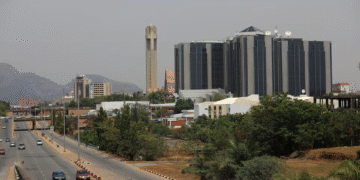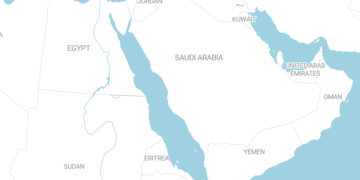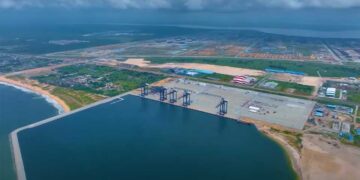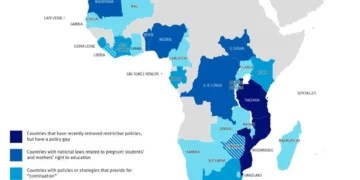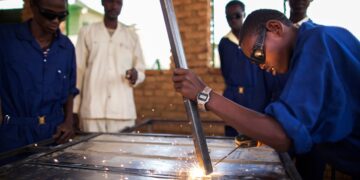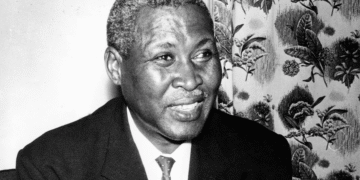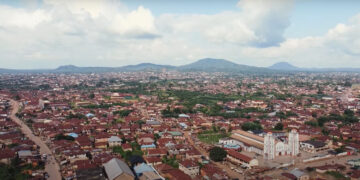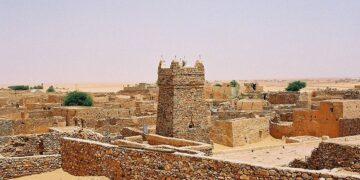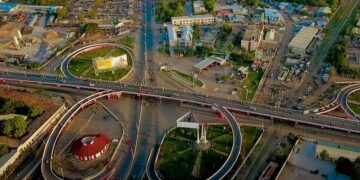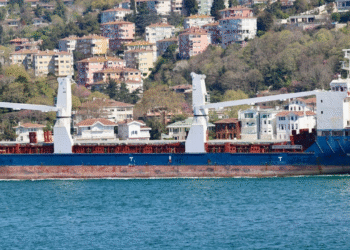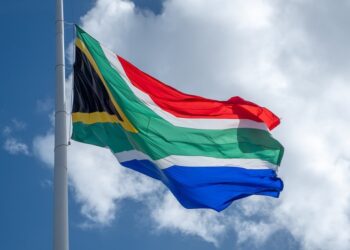Several days of unsettled weather have brought copious amounts of rain to KwaZulu-Natal, the eastern coast of southern Africa. According to an official statement, the deluge spurred deadly flooding and landslides ripping apart roads, destroying hospitals, and sweeping away homes.
The storm which began dropping rain over the coastal province on April 9, 2022, continued for days and went substantial and exceeded the expectations of the southern African meteorological community between April 11-12, has so far affected a total number of 40,723 people, killed at least 341 people, and “severely affected” 58 hospitals and clinics in the province.
Amid a series of rescue missions, recovery operations, and humanitarian reliefs on part of the government and non-governmental organizations, there are still yet forecasts of more rains from weather forecasters that are expected to wreck more damage in the province. This however has caused the South African government to declare a state of disaster in the country’s third most populous city.
Why the disaster?
There have been varying views on part of the South African government, social organizations, and residents of the province as to the cause of the extreme and common rainfall in the province. Instances of their respective positions are legions. For example, earlier in 2022, a report released by scientists of the World Weather Attribution group which was aimed at studying storms in southern Africa attributed the disaster to global warming. But in sharp contrast, the South African Weather Service commission disassociating the storm from global warming and a tropical cyclone, claimed that the storm formed farther away from the equator when an area of low pressure broke away from the prevailing westerly flow of cold air and drifted north toward the country. According to the commission, this occurs most often during the southern hemisphere’s autumn in the country, especially in April.
On other hand, residents have blamed the poor status of local infrastructure arguing that the lack of progress in drainage systems, poorly-built housing, and poor roads system for the flooding incidents in the province. According to the mayor of Durban- a town on the eastern coast of South Africa, Mxolisi Kaunda, houses built on steep hills without solid foundations formed part and parcel of the problems when it comes to minimizing havoc. The fact that the province is hilly and dissected by streams and rivers, will subject houses built there to landslides.
Either way, for the South African government, the incident is expected to be a major tackling point in improving the climate and a sticking point at the next international climate negotiations, the COP27 conference.
Not the first time
The flood incident in South Africa could be regarded as a disaster that repeated itself as it has a great history of its occurrence. According to the Green Book report, The country experienced 77 major floods between 1980 and 2010, costing the lives of over 1,068 people. Since 2010, many other severe flood disasters have occurred with losses of livelihoods, lives, and extensive damage to built infrastructures. An example is that in 2017 and 2019, in each of these years, the country witnessed severe rainfall, flood, hail, and strong winds, but the latest disaster could be seen as the worst in the history of such occurrence in the country.
In 2017 for example, when heavy rain surfaced in KwaZulu-Natal, It left at least 8 people dead, displaced over 500 people, and caused damage to homes and buildings. The torrential rainfall amount was reported around 108 mm breaking the previous record high of 105mm set in October 1985.
In the aftermath of the 2017 occurrence, immediate reliefs were introduced by the government to mitigate post-flood consequences on residents of the province, but it gets, even more, worse with the 2019 Durban easter floods where the coastal city of Durban in KwaZulu-Natal province experienced severe flooding that was caused by heavy rainfall. It seriously affected the city and its environs, and as a result, there were many cases of collapsed buildings, mudslides, and sinkholes which led to at least 70 deaths. It was regarded as one of the deadliest disasters to hit the country in the 2010s decade.
Aids and reliefs
Aside from residents who lost their lives, the aftermath of the flood incident wreaked untold havoc and unleashed massive damage to properties and infrastructure affecting all races and social classes from rural areas, and townships to luxury estates with hundreds of commuters, students, and teachers being trapped in collapsed houses and schools.
However, in an attempt to save lives and minimize the post-disaster casualties, the South African Police Service and the South African National Defense Force have been leading search and rescue efforts, with a current total of 247 rescue operations. The government has also announced an immediate relief funding of one billion rands ($68m). According to a statement released by the office of the president, the fund will be used to focus on immediate stabilization, restoring the provision of services, and rehousing 40,000 people left homeless by the raging floodwaters.
The government is not only alone in this, several nongovernmental organizations are now working closely with both the government and provincial leaders to ensure an effective response in the allocation of financial resources and technical expertise to the emergency, and to donate basic relief materials such as food, blankets, mattresses, clothing, chronic medication, toiletries, and cooking utensils. Importantly, this will not only give an immediate response but as well help develop a clear-cut system of averting future occurrences.






